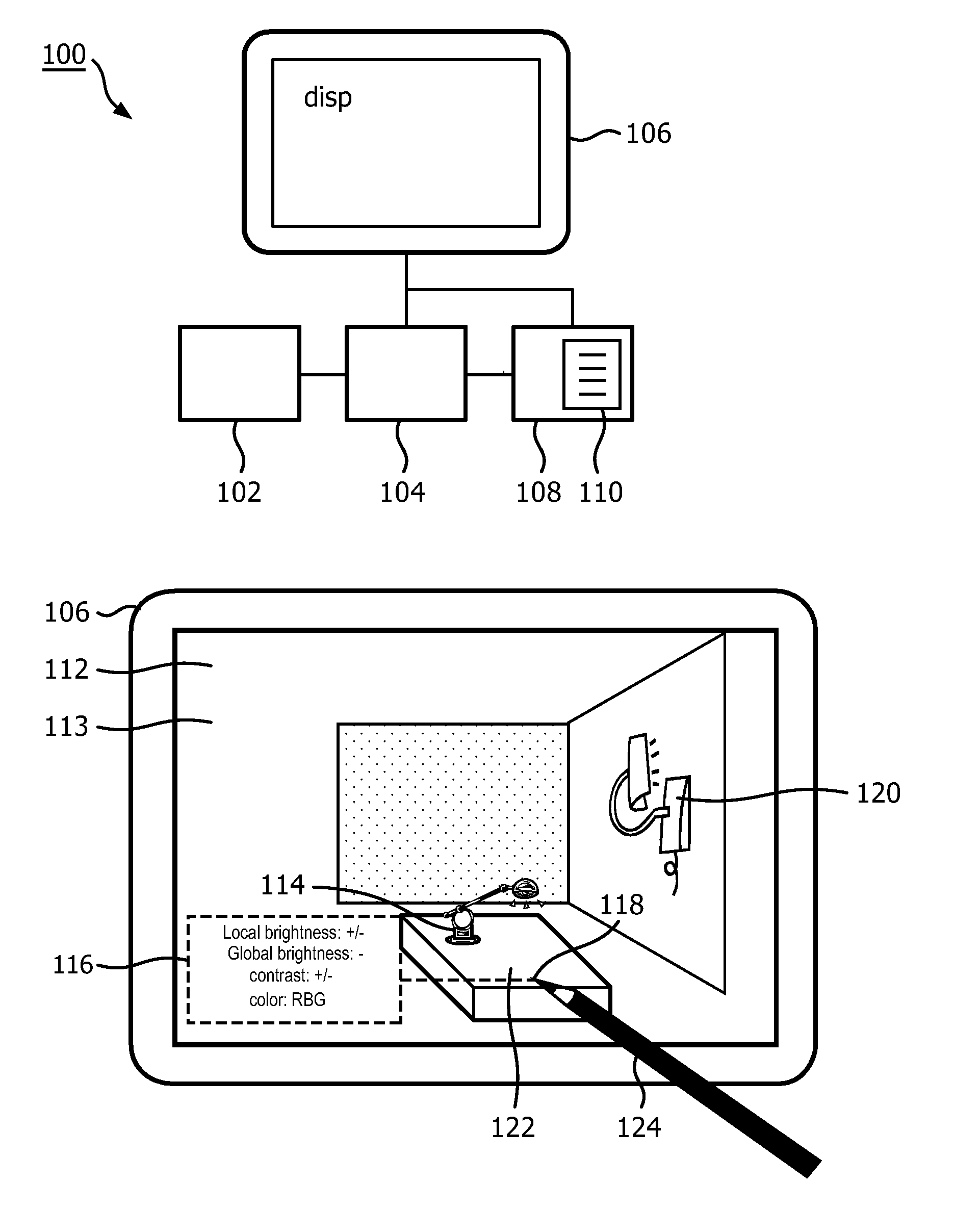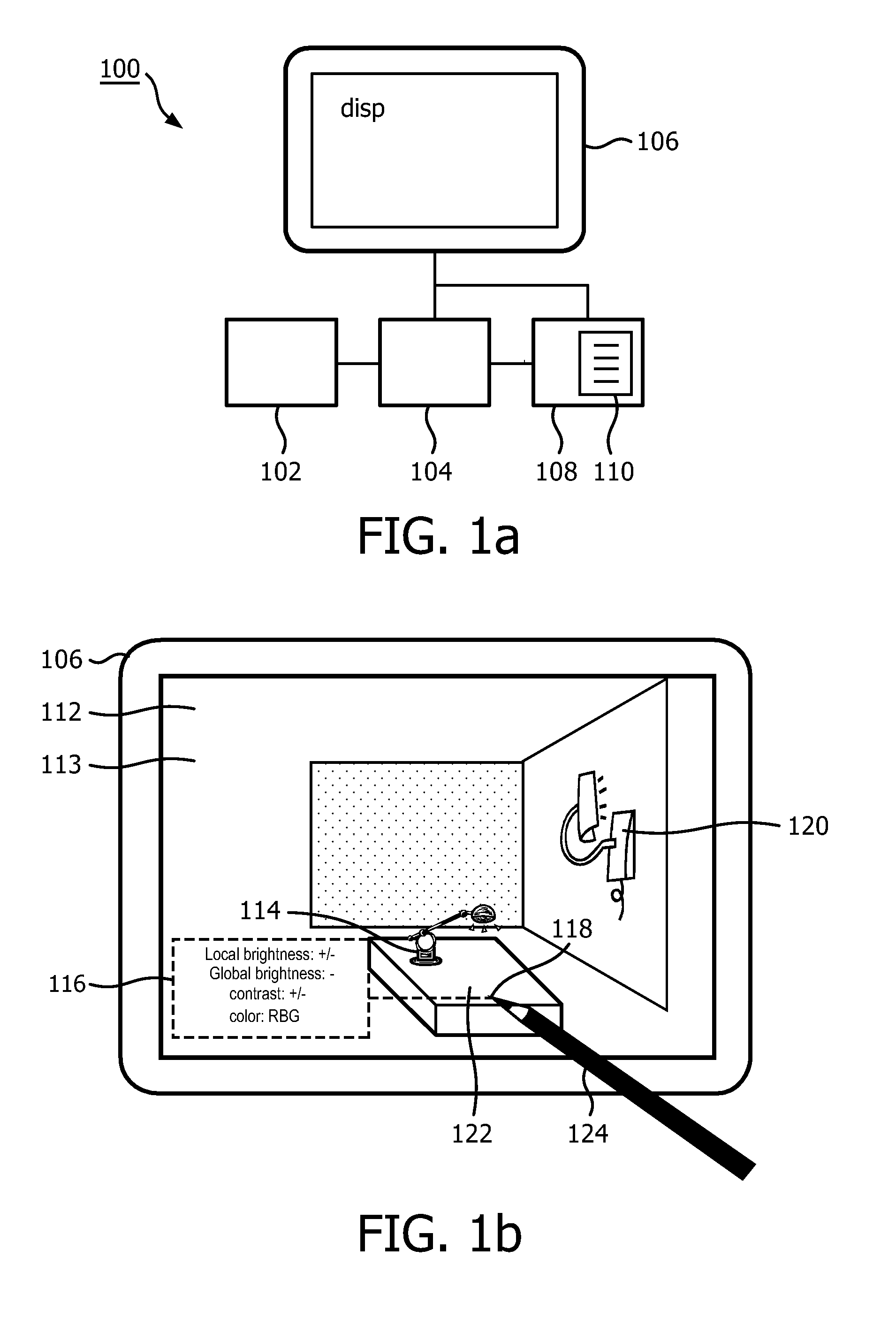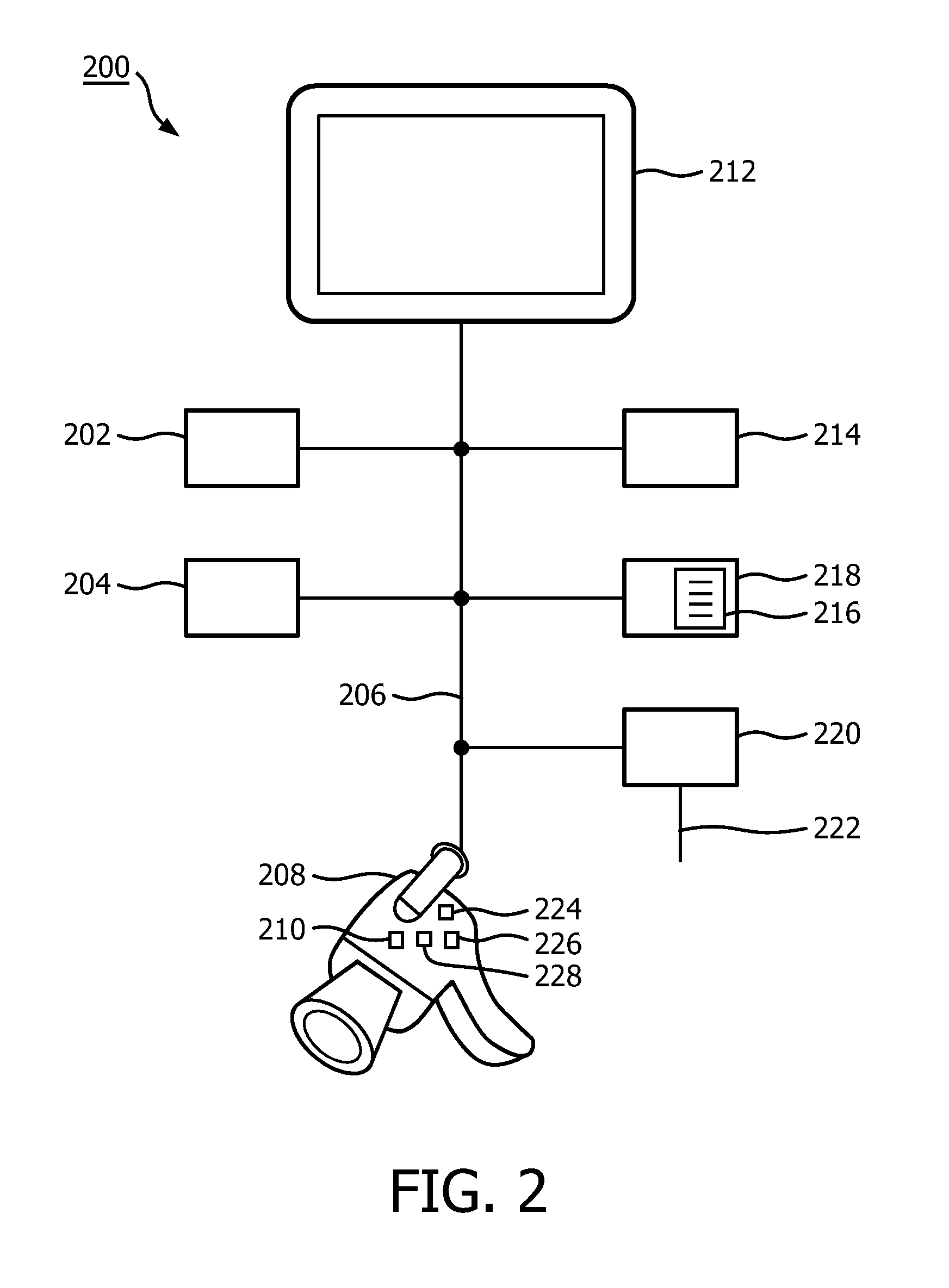Method and a user interaction system for controlling a lighting system, a portable electronic device and a computer program product
a technology of user interaction and lighting system, applied in the direction of electric variable regulation, process and machine control, instruments, etc., can solve the problems of complex lighting system, difficult for users to assess which effects are available in specific areas, etc., and achieve the effect of convenient evaluation for users
- Summary
- Abstract
- Description
- Claims
- Application Information
AI Technical Summary
Benefits of technology
Problems solved by technology
Method used
Image
Examples
Embodiment Construction
[0051]A first embodiment of a user interaction system 100 according to the first aspect of the invention is shown in FIG. 1a. By means of the user interaction system 100, a lighting system for lighting an environment may be controlled. The user interaction system 100 comprises a display 106, an input means 102, a location identification means 104 and an overlay image creator 108. The display is capable of displaying a subarea image 112 and an overlay image 113, which are shown in FIG. 1b. The subarea image 112 may be displayed without the overlay image 113 and together with the overlay image 113. The subarea image 112 is a recording of a specific subarea of the environment and the subarea image 112 is recorded at a specific moment in time. The user-input means 102 is for receiving user input. The user input comprises a location indication 118. The location indication 118 may initially relate to a point or location in the subarea image 112 or may initially relate to a point or locati...
PUM
 Login to View More
Login to View More Abstract
Description
Claims
Application Information
 Login to View More
Login to View More - R&D
- Intellectual Property
- Life Sciences
- Materials
- Tech Scout
- Unparalleled Data Quality
- Higher Quality Content
- 60% Fewer Hallucinations
Browse by: Latest US Patents, China's latest patents, Technical Efficacy Thesaurus, Application Domain, Technology Topic, Popular Technical Reports.
© 2025 PatSnap. All rights reserved.Legal|Privacy policy|Modern Slavery Act Transparency Statement|Sitemap|About US| Contact US: help@patsnap.com



